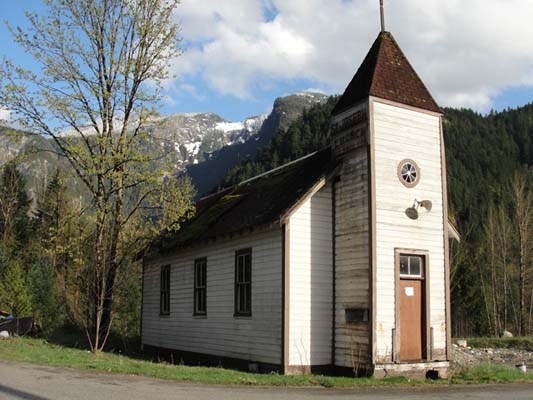Despite a distant shared history, Yaletown and the town of Yale don’t have much in common these days. There are no posh yoga studios, pet accessory boutiques, organic grocery stores or places to buy a caramel macchiato in Yale, an unincorporated town of roughly 200 people a two-hour drive east from Vancouver. There’s not even a pub or restaurant to catch a Canucks game on a Saturday night, as my wife and I found out on a recent visit.
“There used to be a restaurant across the street but they closed up one day and put up a sign saying ‘See you in the Spring,’” said a woman working behind the counter at Barry’s Trading Post, which serves as the town’s post office, liquor store, convenience store and de facto downtown. “That was a few years ago though, so I’m not sure what specific spring they had in mind.”
This sleepy Fraser Canyon town on the Trans-Canada Highway once had more people living there than modern day Yaletown and was known as the largest city north of San Francisco and west of Chicago, with a population of more than 15,000 people, most of whom arrived shortly after gold was discovered on a nearby gravel bar in 1858. A Hudson’s Bay Company manager by the name of Ovid Allard originally named the place Fort Yale after his boss, James Murray Yale. It later became the divisional headquarters for the Canadian Pacific Railway, which relocated to Vancouver when the line was completed and former residents built a new home they called Yaletown in its honour.
The first European to lay eyes on the surrounding area was explorer Simon Fraser, who took a much needed rest there after finding out the hard way First Nations weren’t kidding about the rapids on the river that now bears his name being impossible to navigate by canoe. “A place where no human being should venture, for surely we have encountered the gate of hell,” Fraser wrote in 1808 about the waters north of Yale, which he was forced to painstakingly portage around.
One person’s hell, however, is another’s idea of heaven. Take Darwin and Sue Baerg, two former Coquitlam residents who fell in love with the area and have taken people down those same rapids and other nearby rivers for more than 20 years with their family business, Fraser River Raft Expeditions.
“We feel very fortunate to have so many incredible rivers right here in our backyard and we are busy pretty much all summer long and a good chunk of the spring and fall,” said Sue.
The Fraser is one of only two rivers in the world people run commercially with giant J-rig motorized rafts, although the Baergs don’t risk running “Hell’s Gate” rapids during the spring run-off.
“The bigger boats are pretty forgiving but you can get yourself into some carnage pretty quick because there is some big water on the Fraser,” said their son Will, who has followed in his parents’ footsteps to become a river guide. “Boats have flipped in there before, although none of ours ever have.”
The family also operates a unique bed and breakfast in a restored 19th century home full of antiques and period furniture called the Teague House, named for a pioneer family that lived there for generations. Sue promises it is “only a bit haunted and the spiritually aware folks who stay say the ghosts are curious but friendly.” We didn’t see any ghosts during our own stay in the lovingly restored building and, although we were awakened a few times in the night by loud shrieking and the walls shaking, we are fairly certain it was from a passing CPR train rather than poltergeists.
Visitors who want to have a less up close and personal experience with Hell’s Gate also have the option of taking a gondola ride over the rapids, which sees an average of 7.5 million litres of water — twice the volume of Niagara Falls — rush through the narrow gorge during the spring freshet. The roadside attraction, open April 26 to Oct. 14, also offers educational displays about the Fraser’s eco-systems and history (including a newly created exhibit highlighting the contribution of Chinese labourers to building the railway in the 1880s), gold panning lessons, observation decks and a suspension bridge. The complex also includes a cafe famous for its salmon chowder where you might possibly even be able to order a caramel macchiato.
See more photos below
afleming@vancourier.com



